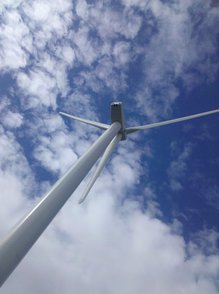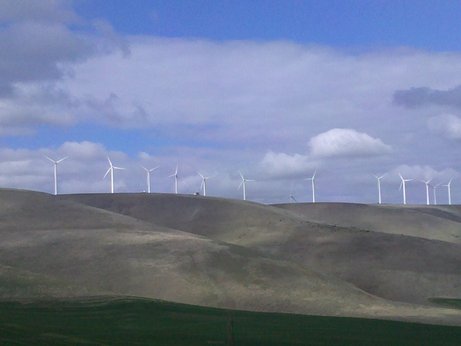Schumann Wind Project
Wind Energy
A Brief History on Wind Energy
Wind has been around a long time! Since ancient times, people have harnessed the winds energy. Over 5,000 years ago, the ancient Egyptians used wind to sail ships on the Nile River. Later, people built windmills to grind wheat and other grains. The earliest known windmills were in Persia (Iran). These early windmills looked like large paddle wheels. Centuries later, the people of Holland improved the basic design of the windmill. They gave it propeller-type blades, still made with sails. Holland is famous for its windmills.

American colonists used windmills to grind wheat and corn, to pump water, and to cut wood at sawmills. As late as the 1920s, Americans used small windmills to generate electricity in rural areas without electric service. When power lines began to transport electricity to rural areas in the 1930s, local windmills were used less and less, though they can still be seen on some Western ranches.
The oil shortages of the 1970s changed the energy picture for the country and the world. It created an interest in alternative energy sources, paving the way for the re-entry of the windmill to generate electricity. In the early 1980s wind energy really took off in California, partly because of state policies that encouraged renewable energy sources. Support for wind development has since spread to other states, but California still produces more than twice as much wind energy as any other state.

Like old fashioned windmills, today's wind machines use blades to collect the winds kinetic energy. Windmills work because they slow down the speed of the wind. The wind flows over the airfoil shaped blades causing lift, like the effect on airplane wings, causing them to turn. The blades are connected to a drive shaft that turns an electric generator to produce electricity.
With the new wind machines, there is still the problem of what to do when the wind isn't blowing. At those times, other types of power plants must be used to make electricity.
PLEASE NOTE: The material dealing with the COSNER v UMATILLA COUNTY LUBA Appeal of the local Ordinance 2011-05, 2011-06 and 2011-07 has been moved to the Land Use Hearings page.
Planning Commission Work Sessions 2009
The June 25 and the July 23, 2009 Planning Commission Meeting Presentation.
Wind Power Development Fish Concerns 10-09 by Gary James, CTUIR.
Wind Power Siting Considerations 10-22-09 by UBWC
Umatilla County Wind Power - Wildlife Considerations, ODFW
Overlapping Watershed Concerns, Bob Bauer, Senior Hydrologist, Walla Walla Watershed Council.
County Wind Projects Map
Umatilla County has many existing wind projects that have been developed over the past 10 + years. with many more in the wings. The approval process for wind energy projects and associated transmission lines is outlined in the County Development Code.
Wind Energy Map (Revision: January 2016) showing current wind projects, met towers and other features of Umatilla County, Oregon.
Met Tower Listing, updated March 2011. Meteorological Towers are placed on a property to determine the qualities of the wind through a given period of time. Met Towers are placed on a property for up to 2 years to measure wind quality, frequency, etc.
Contact Information
Click here for the Staff Directory
Community Development
216 SE 4th Street, Room 104
Pendleton, OR 97801
541-278-6252
planning@umatillacounty.gov
Other Agency Links
Oregon Building Codes
DEQ
FEMA Flood Insurance Rate Maps
OSU Extension

